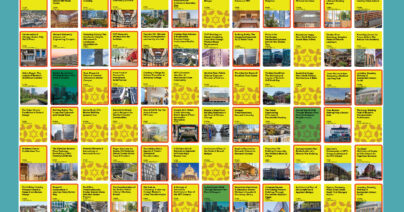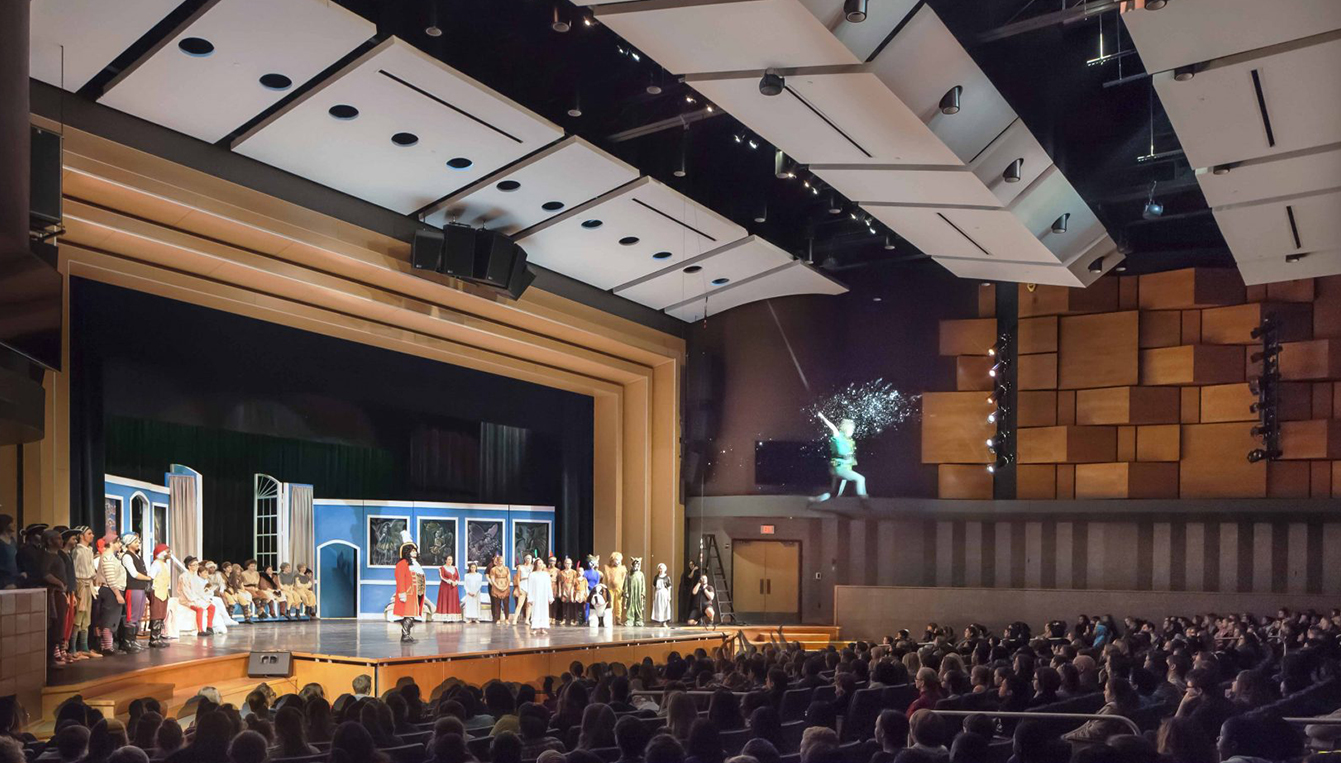 News
News
30 Acentech projects will be toured during AIA25 Conference!
Acentech worked on an astounding 30 projects that are being toured at the AIA25 Conference on Architecture in Boston next month! We had a great time…

My first theatrical activity, in 1949, was as curtain puller in the 6th grade musical, Kathleen, the Maid of Killarney, at Brookdale Elementary School (Bloomfield, NJ). From there I moved on to Junior high school stage crew, community theatre backstage work and high school stage management, later to Drama School at Carnegie Tech (now Carnegie Mellon University).
From these experiences I learned the deficiencies, for young artists and speakers, of the existing school facilities. I learned that often owners had chosen seat counts too large for youthful performers, and designers of these buildings typically placed features in unworkable places, often had not chosen the best theatrical equipment for the task at hand, had provided no means or unsafe means of accessing equipment requiring attention, designed no means of access from audience to stage and no way for people in wheelchairs to easily use the facilities.
Frustrated with these facilities, I chose to do my master’s degree research into the use, planning and design of these spaces. This aspect of acoustics and performance space planning and design continues to interest me more than half a century later.
I earned my Masters Degree from the Theatre School at the Pennsylvania State University in 1963. Since that time a number of significant changes that I advocated after my study have happened in the field. Of course this is personally and professionally rewarding, but much more important, children, youth, their parents and communities are benefiting greatly from these improvements.
Perhaps most important of these recommendations concern the much more extensive use of specialized consultants in acoustics and theatre design, which together cover the technical aspects of music, speech, dance, and assembly space design. These consultants provide key support to building owners, architects, engineers and building contractors as school auditoria are developed.
While very few high school and almost no elementary and middle school projects retained these consultants in the late 1950s and early 1960s, many do today. The use of consultants has had much impact on recent facilities, including those to which ACENTECH has contributed in Deerfield, Greenfield, Newton, Tewksbury and Whitinsville, Massachusetts.
In the 30s, 40s, and 50s, the norm was to build auditoria seating the entire school student body or to serve the wider community’s performance facility needs. This resulted in some high school auditoria with 1,800 to 2,400 seats —a daunting audience scale and vocal projection distance for young performers. There is more awareness today that it is best to provide 300-500 seat spaces for performances, that the internet/local public access TV era provides other useful means to quickly communicate with an entire student body, and it is possible to conduct student assemblies for one or several grades of a school rather than for an entire student body.
There has been significant improvement in student safety, as they start design/technical performing arts work, work that can lead to excellent careers or enriching recreation. Theatre consultants have worked to satisfy the needs of those needing special accessibility features—usually features that improve the performance experience for all. Speech intelligibility and the enjoyment of music have been enhanced; spaces are typically now more closely scaled to the needs of elementary and high school students. These changes have improved the first performance experiences of many.
Sightlines for different age groups have been improved, along with acoustics flexibility. This flexibility includes incorporation of devices for changing these spaces from providing good speech acoustics to the various acoustic environments for the entire musical repertoire, including amplified vocal and instrumental music. Lastly, just as important, there is growing acceptance that school performance/assembly facilities require special design attention to noise and vibration. This is especially true if low noise is to be achieved while adhering to tight budgets and making use of contemporary construction methods. It is now accepted by some school districts that with close attention to these factors, their projects can achieve the low noise and vibration criteria school children deserve as they take their first steps as performers and speakers. With effective acoustics consulting these two goals can be managed within prudent budgets and without slowing their projects.
Also significant is that during this same period, facilities have been developed to be accessible to all, and to be more welcoming and attractive architecturally while achieving these practical, performance related considerations.
Looking back on 50+ years of consulting, I see significant, meaningful improvement in school facilities. This makes these venues more useful for their students, and for the community as a whole.